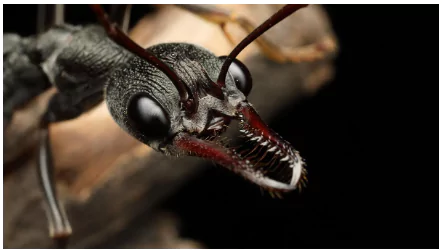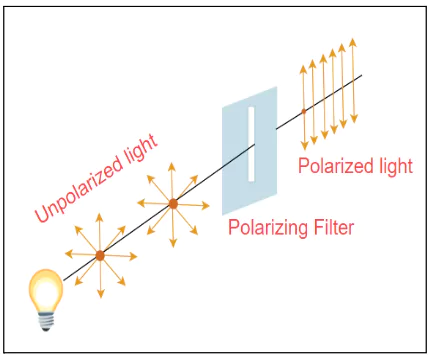Scientists at Macquarie University, Sydney, discovered that two nocturnal bull ant species, Myrmecia pyriformis and Myrmecia midas, navigate at night using polarised moonlight.
- This is only the second known instance of an animal using polarised moonlight instead of sunlight for orientation after the Dung beetle.
Results and Findings

- Navigation Using Polarised Moonlight: Ants relied on polarised moonlight for navigation under full, waxing, and waning moon phases. Their accuracy varied with the moon’s phase and was ineffective when the moon was absent.
- Internal Distance Tracking: Ants continuously update their distance vector while traveling. Even when released midway, they retain their sense of distance to the nest.
- Similarities with Solar Navigation: Scientists found strong similarities between solar and moonlight navigation in ants. This suggests that many insects use both light sources for orientation.
Role of Polarised Light in Navigation

- Formation of Polarised Light: Both the sun and the moon emit unpolarised light. As light travels through the Earth’s atmosphere, it gets scattered by air particles, becoming polarised.
- This polarisation pattern provides a natural compass for animals.
- Differences Between Sunlight and Moonlight
- Sunlight is strongly polarised and widely used by insects for navigation.
- Moonlight is much dimmer but still carries a consistent polarisation pattern that certain nocturnal animals can detect.
Significance of the Discovery:
- Importance for Nocturnal Animals: Many nocturnal animals, such as ants and bees, rely on the moon’s position to find their way.
- However, the moon’s visibility is inconsistent due to waxing and waning cycles, cloud cover, or tree canopies.
About Polarised Light
- Normal (Unpolarised) Light: Light waves vibrate in multiple directions.
- Polarised Light: When light passes through the atmosphere or reflects off surfaces like water or glass the waves align in a single direction.
Sunlight vs. Moonlight Polarisation
- Sunlight: Strongly polarised as it scatters in the sky, making it a reliable navigation tool for many insects.
- Moonlight: Much dimmer and less polarised, but still carries a consistent pattern detectable by certain nocturnal animals.
|
- Unique Use of Polarised Moonlight: Unlike sunlight, which many animals use for navigation, few animals use the much dimmer polarised moonlight.
- Even under a crescent moon, when moonlight is 80% less intense, these ants could still navigate using polarised moonlight.
Moonlight Polarisation
- When moonlight enters Earth’s atmosphere, it is scattered by air molecules and dust particles, causing polarisation.
- The degree of polarisation varies based on the moon’s phase:
- Full moon: Low polarisation due to stronger light intensity.
- Crescent moon: Higher polarisation since the light is dimmer and scatters more efficiently.
Types of Species Based on Time of Activity
| Type |
Activity Period |
Examples |
Key Features |
| Diurnal |
Active during the day |
Humans, Butterflies, Eagles |
Rely on daylight for vision and activity. |
| Nocturnal |
Active during the night |
Owls, Bats, Leopards |
Enhanced night vision or echolocation. |
| Crepuscular |
Active at dawn and dusk |
Deer, Fireflies, Rabbits |
Avoids predators, utilizes dim light. |
| Cathemeral |
Active at varying times |
Lions, Bears, Lemurs |
Flexible activity depending on conditions. |
![]() 20 Feb 2025
20 Feb 2025



